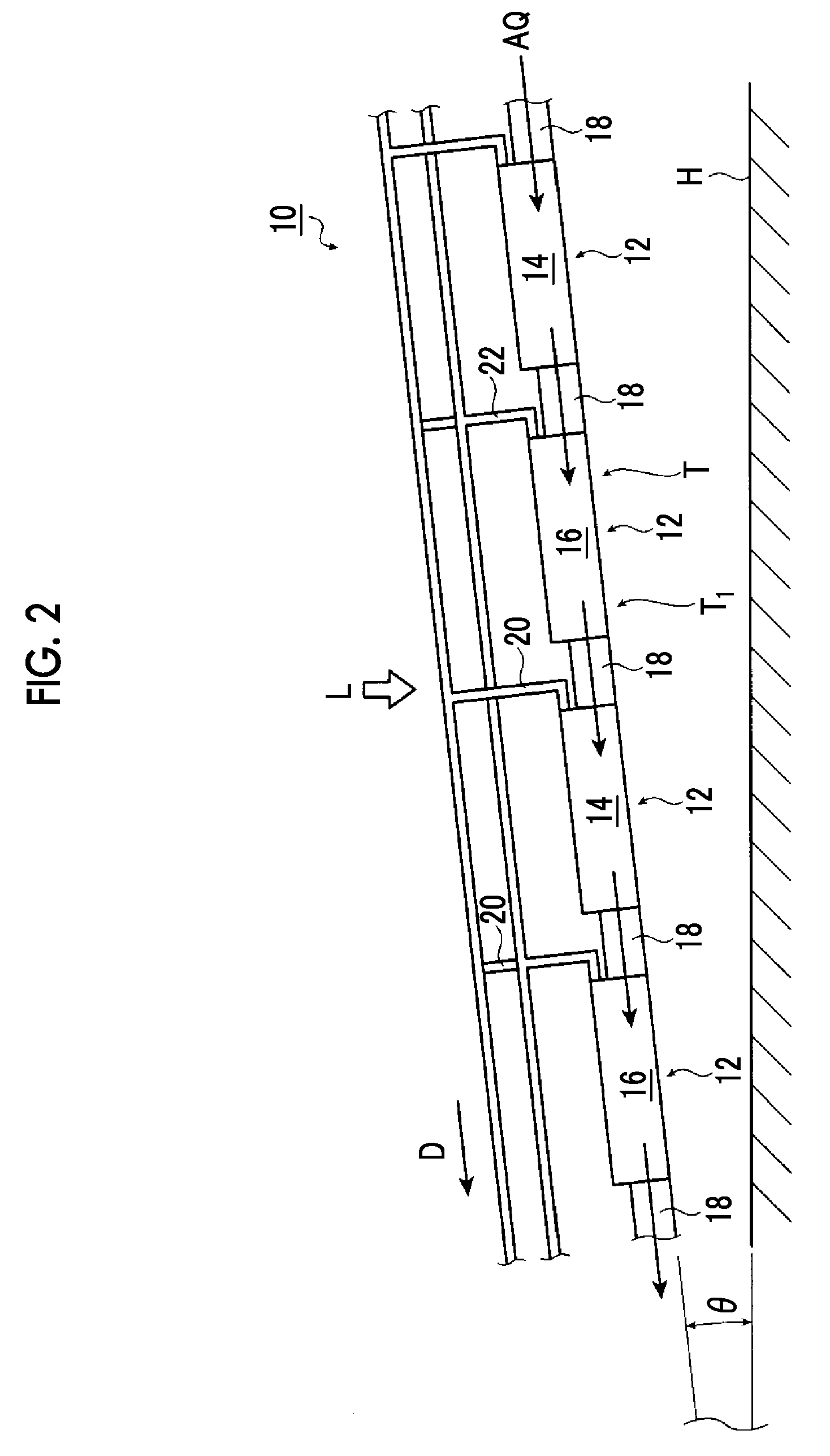Artificial-photosynthesis array
a technology of artificial photosynthesis and arrays, which is applied in the direction of electrode coating, final product manufacturing, sustainable manufacturing/processing, etc., can solve the problems of difficult to keep the ion concentration or ph value constant in water, the ability of water decomposition to degrade, and the difficulty of hydrogen gas and oxygen gas separation
- Summary
- Abstract
- Description
- Claims
- Application Information
AI Technical Summary
Benefits of technology
Problems solved by technology
Method used
Image
Examples
second embodiment
[0128]Next, the invention will be described.
[0129]FIG. 6 is a schematic plan view illustrating an artificial-photosynthesis array of a second embodiment of the invention, and FIG. 7 is a side view of an artificial-photosynthesis array of the second embodiment illustrated in FIG. 6. In addition, FIG. 7 is a side view when an artificial-photosynthesis array 10a illustrated in FIG. 6 is seen from direction A3.
[0130]In the artificial-photosynthesis array 10a of the present embodiment, the same structures as those of the artificial-photosynthesis array 10 illustrated in FIGS. 1 and 2 will be designated by the same reference signs, and the detailed description thereof will not be described. Additionally, the artificial-photosynthesis array 10a has artificial-photosynthesis modules 60. In each artificial-photosynthesis module 60, the same structures as those of the artificial-photosynthesis module 12 illustrated in FIGS. 3 to 5 will be designated by the same reference signs, and the detail...
first embodiment
[0143]Additionally, in the method for manufacturing the artificial-photosynthesis module 60, the detailed description of the same processes as those of the method for manufacturing the artificial-photosynthesis module 12 of the first embodiment will be omitted.
[0144]In the method for manufacturing the artificial-photosynthesis module 60, since a process of forming the protective layer 50 and forming the photoelectric conversion unit 30 and a process of forming the functional layer 52 and forming the co-catalyst 54 for generation of hydrogen on the functional layer 52 are the same processes as those of the method for manufacturing the artificial-photosynthesis module 12 except for a process of first preparing a soda lime glass substrate that becomes the insulating substrate 40, and then providing the partition wall 17, the detailed description thereof will be omitted.
[0145]Thereafter, the insulating substrate 40 and the back electrode 42 at the position equivalent to the photoelectri...
PUM
| Property | Measurement | Unit |
|---|---|---|
| overvoltage | aaaaa | aaaaa |
| thickness | aaaaa | aaaaa |
| thickness | aaaaa | aaaaa |
Abstract
Description
Claims
Application Information
 Login to View More
Login to View More - R&D
- Intellectual Property
- Life Sciences
- Materials
- Tech Scout
- Unparalleled Data Quality
- Higher Quality Content
- 60% Fewer Hallucinations
Browse by: Latest US Patents, China's latest patents, Technical Efficacy Thesaurus, Application Domain, Technology Topic, Popular Technical Reports.
© 2025 PatSnap. All rights reserved.Legal|Privacy policy|Modern Slavery Act Transparency Statement|Sitemap|About US| Contact US: help@patsnap.com



